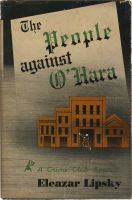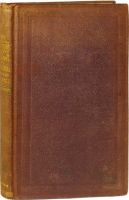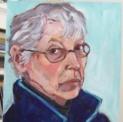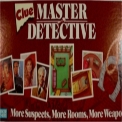Saturday, November 24: New York Minute
THE CORNERSTONES OF CRIME (Part 3)
by Barry T. and Angela Zeman
 Our last installment reviewed many of the best and most famous books on the Haycraft-Queen Cornerstone list. Now we will look at some books that were key to the development of detective/mystery fiction, but perhaps little known to the general reader not familiar with the historical roots of the genre. But, first we wish to especially emphasize that no list of great detective stories would be complete without including, as Haycraft did, all the Sherlock Holmes books and stories authored by Arthur Conan Doyle. Ellery Queen called this “sheer idolatry”, but many millions of fans worldwide would heartily disagree. For old and new readers, the wonderful fact is that every original book or story about “the worlds first consulting detective” is easily obtainable. No other character has been as popular in the history of fiction. Cheap reprints abound and literally thousands of pastiches, pamphlets and “histories” have been written, with many still appearing every year.
Our last installment reviewed many of the best and most famous books on the Haycraft-Queen Cornerstone list. Now we will look at some books that were key to the development of detective/mystery fiction, but perhaps little known to the general reader not familiar with the historical roots of the genre. But, first we wish to especially emphasize that no list of great detective stories would be complete without including, as Haycraft did, all the Sherlock Holmes books and stories authored by Arthur Conan Doyle. Ellery Queen called this “sheer idolatry”, but many millions of fans worldwide would heartily disagree. For old and new readers, the wonderful fact is that every original book or story about “the worlds first consulting detective” is easily obtainable. No other character has been as popular in the history of fiction. Cheap reprints abound and literally thousands of pastiches, pamphlets and “histories” have been written, with many still appearing every year.
In 1856 William Russell, writing under the name “Waters”, produced Recollections of a Detective Police-Officer, the first English detective yellow-back. This type of book was sold in railroad stations, becoming the vastly popular and primary diversion of the English traveler, not unlike the popularity of airport bookstores of today. It’s American counterpart, the first Dime Novel detective story appeared in 1872. The most famous and best written was Old Sleuth, The Detective. Appearing in 1883, it was authored by uncredited writer Harlan Page Halsey.
 In the lineage if the development of the full-length detective book, Emile Gaboriau was named by Queen as the “Father of the Detective Novel”. This French writer was very popular in Great Britain, Canada and the United States from the early 1860’s’s through the early 1900’s. The L’Affair Lerouge (1866), Le Dossier No. 113 (1867), Le Crime d’Orcival (1868) and Monsieur Lecoq (1869) all appear on the H-Q List.
In the lineage if the development of the full-length detective book, Emile Gaboriau was named by Queen as the “Father of the Detective Novel”. This French writer was very popular in Great Britain, Canada and the United States from the early 1860’s’s through the early 1900’s. The L’Affair Lerouge (1866), Le Dossier No. 113 (1867), Le Crime d’Orcival (1868) and Monsieur Lecoq (1869) all appear on the H-Q List.
The pioneer American detective novel was The Dead Letter, written in 1866 by Seeley Register, the pseudonym of a popular writer of the time by the name of Metta V. Victor. It appeared two years before The Moonstone, Wilkie Collins’ masterpiece that earned him the title of the “Father of the English Detective Novel”.
 The generally accepted “Mother of the American Detective Novel” was Anna Katherine Green. Her first of many highly popular books, The Leavenworth Case, appeared in 1878. The first of a number of Ebenezer Gryce novels, it contained a “sound police officer… and a remarkably cogent plot”, according to Haycraft. Appearing a decade before Sherlock Holmes, “it sprang full-fledged from its author’s head, without traceable antecedents”, except perhaps Seeley Register. She published approximately thirty mystery or detective novels well into the first decades of the 20th century. If Green is the “Mother” of the American detective novel, Register must surely be considered the “Godmother” with her lone early historic venture into the field.
The generally accepted “Mother of the American Detective Novel” was Anna Katherine Green. Her first of many highly popular books, The Leavenworth Case, appeared in 1878. The first of a number of Ebenezer Gryce novels, it contained a “sound police officer… and a remarkably cogent plot”, according to Haycraft. Appearing a decade before Sherlock Holmes, “it sprang full-fledged from its author’s head, without traceable antecedents”, except perhaps Seeley Register. She published approximately thirty mystery or detective novels well into the first decades of the 20th century. If Green is the “Mother” of the American detective novel, Register must surely be considered the “Godmother” with her lone early historic venture into the field.
 The Cornerstone list is also replete with other obscure, but sometimes innovative books. These key books that broke new ground or started new concepts were not always great literature. An example of such would be The Mystery of a Hansom Cab by Fergus Hume, first published in Melbourne in 1887, it was very popular in it’s day getting more attention than Doyle’s Study in Scarlet, eventually selling more than half a million copies. The fact that it was the Victorian era’s blockbuster bestseller is it’s claim to fame. A poorly done potboiler, the modern reader will find it is virtual unreadable.
The Cornerstone list is also replete with other obscure, but sometimes innovative books. These key books that broke new ground or started new concepts were not always great literature. An example of such would be The Mystery of a Hansom Cab by Fergus Hume, first published in Melbourne in 1887, it was very popular in it’s day getting more attention than Doyle’s Study in Scarlet, eventually selling more than half a million copies. The fact that it was the Victorian era’s blockbuster bestseller is it’s claim to fame. A poorly done potboiler, the modern reader will find it is virtual unreadable.
Important developmental books followed with the first “gentleman criminal” book (or as some call it, “detection in reverse”), E.W. Hornung’s The Amateur Cracksman, being published in the UK in 1899. This first appearance of “Raffles” became the favorite of many readers over the years spawning a multitude of imitators, even to this day.
Despite the appearance of a number of “spy” adventures by Alan Pinkerton, the first being The Expressman and the Detective (1874), the acknowledged progenitor of the modern spy or “secret service” type story, was Erskine Childers’ The Riddle of the Sands, which appeared in 1903. Childers was later executed by the British for his role in the Irish Troubles.
 Leading us into the realm of much less obscure, but equally important books in the development of the crime/detection mystery story, comes Baroness Orczy who made popular The Scarlet Pimpernel, an early example of the “historical” mystery novel in 1905, and the first “armchair” detective, The Old Man in the Corner in 1909. In 1907 an invalided physician, R. Austin Freeman, created the first medico-legal, or “scientific” detective story, The Red Thumb Mark. In The Singing Bone (1912) Freeman came up with another major development, the “inverted” detective story, where according to Haycraft, he revealed “the full stories of the crime first, then describing the steps leading up to the solutions by the detective”. Although Freeman’s narrative style is of the late Victorian era, his “ pioneer insistence on the fair-play model” made him a “Modern before the Modern’s.” in Haycraft’s opinion.
Leading us into the realm of much less obscure, but equally important books in the development of the crime/detection mystery story, comes Baroness Orczy who made popular The Scarlet Pimpernel, an early example of the “historical” mystery novel in 1905, and the first “armchair” detective, The Old Man in the Corner in 1909. In 1907 an invalided physician, R. Austin Freeman, created the first medico-legal, or “scientific” detective story, The Red Thumb Mark. In The Singing Bone (1912) Freeman came up with another major development, the “inverted” detective story, where according to Haycraft, he revealed “the full stories of the crime first, then describing the steps leading up to the solutions by the detective”. Although Freeman’s narrative style is of the late Victorian era, his “ pioneer insistence on the fair-play model” made him a “Modern before the Modern’s.” in Haycraft’s opinion.
Mary Robert Rinehart’s 1908 classic, The Circlular Staircase, was said by Queen to have marked the founding of the “HAD-I-BUT-KNOWN” school. “Her protagonists are always blundering into carefully laid traps and springing them prematurely, or forgetting to tell the official detective of important clues”, explains Haycraft. The most popular and highest paid writer of her day, Rinehart had a huge number of less effective imitators. Haycraft said “only Mrs. Rinehart’s superlative talent as one of the greatest story tellers of the age (and the intensely human quality of her writing) that induces us to overlook in her tales breaches of detective etiquette we could excuse in nobody else”.
In 1910 another major innovation came about. William MacHarg and Edwin Balmer wrote the first book to make scientific use of psychology in crime detection, a short story collection entitled The Achievements of Luther Trant. Closely following were other groundbreaking books. 1913 saw the appearance of two English classics, The Lodger, one of the earliest suspense novels, by Mrs. Belloc Lowndes, and E.C. Bentley’s Trent’s Last Case, which Queen said, marked the “birth of naturalism in characterization.” The first blind detective appeared in the character of Max Carrados, in a book of the same name written by Ernest Bramah in 1914. In 1929 came the first detective psychoanalyst in Detective Duff Unravels It, by Harvey J. O’Higgins.
 This brings us pretty much to the end of important (yet often lesser known) innovative developments in the genre until Dashiell Hammett founded the realistic, hard boiled school of detective fiction that still defines so much of contemporary crime fiction today, reaching his zenith with The Maltese Falcon, one of the all time high spots in the genre.
This brings us pretty much to the end of important (yet often lesser known) innovative developments in the genre until Dashiell Hammett founded the realistic, hard boiled school of detective fiction that still defines so much of contemporary crime fiction today, reaching his zenith with The Maltese Falcon, one of the all time high spots in the genre.
We have gone on so long that we did the unthinkable; not accomplishing all we told you we would. Next time we promised to fulfill that pledge to give you number of underappreciated books from the H-Q List you will definitely want to read.




















Thanks for the valuable history. Dissenting note on Fergus Hume’s THE MYSTERY OF A HANSOM CAB: though Haycraft wrote it off, it really isn’t bad.